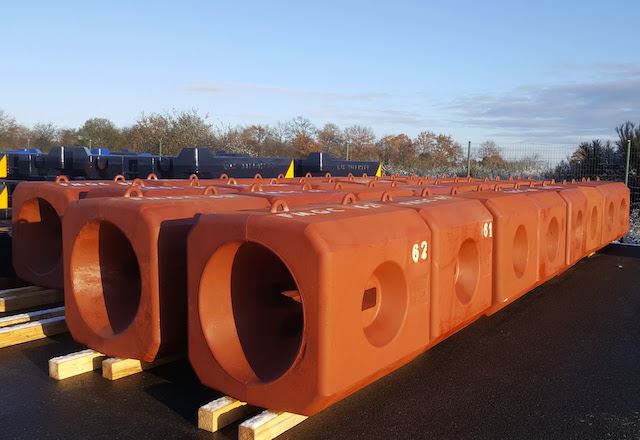
For some years clump weights have been integrated into the oil and gas mooring systems but faced some issues and failures, which has led to the bad reputation of the technology. FMGC has seen this as an opportunity and taking into account the past has created a better solution, meeting the challenges of the floating structures and improving the performance of all involved devices at reasonable cost.
In environment where the cost is now part of the equation the clump weight solution restricts the movements of the floating structure by contributing to the restoring forces in relatively shallow waters, without resorting to expensive solutions or longer mooring lines length. Thus they offset a part of the vertical forces against the anchor in catenary or semi-taut design.
Mooring Systems Deployed in Oil and Gas: Essentials
Even though all moorings have similar components, they differ a lot in design, since most of them have been specifically tailored to the project and depend on the bathymetrie and the metocean data but as well on the design of the platform.
The most common types of mooring systems deployed until now in different projects include catenary, taut leg, semi-taut, spread, and single point. Some mooring systems deployed in the oil and gas industry can be coupled as well to a dynamic positioning system.
Despite the wide range of mooring solutions available for the oil and gas market, the fast development of the sector induces a number of new challenges. One of the main concerns is related to the cost effectiveness of the projects. Indeed, since several years the price of the components has become as important as the technical or track records characteristics. Thus the sector considers as a good solution, a product which perfectly combines technical and financial efficiency taking into account the industry’s standards for high quality, security and reliability.
Clump weights offer a great opportunity. Indeed, clump weights can be deployed on traditional mooring designs to contribute to the restoring forces applied by the mooring system on the platform.
Clump Weights for Oil and Gas Mooring Installations

An oil and gas offshore installation is kept in place by a sophisticated mooring system, taking all permanent, variable and environmental loads. To be as robust, the system should be properly designed, manufactured, installed and maintained. FMGC is aware of the sector’s challenges and the foundry’s main goal is to provide the industry with cost efficient products of highest quality.
A reliable mooring system secures the status of an oil and gas offshore installation as a trusted energy source.
The FMGC clump weights have 4 main objectives:
- to ensure restoring forces by providing a larger reaction to the floating platform displacements;
- to limit excessive line tensions in order to avoid breakages;
- to limit vertical loads on the anchors when clump weights are positioned at the touchdown point;
- to provide a reduction of the mooring line length by adding additional masses in specific zones of the mooring system.
FMGC clump weights are made of cast iron featuring very high density and and thus providing the weight needed to ensure the restoring forces in a really compact volume. They are available in two models: a distributed and a mutualized configuration.
Recently FMGC has delivered clump weights for a FPSO (A Floating Production Storage and Offloading installation) mooring deployed in Asia. Thanks to the close collaboration with the customer FMGC has been able to deliver a system, which fulfil all the requirements in terms of quality, efficiency and costs.
In order to provide the most accurate solution - a clump weight, meeting all requirements, the FMGC dedicated teams are working closely with the customer from the basic design to the mass production. Moreover, FMGC is able to achieve the numerical analysis and tests on prototypes ensuring the reliability of the clump weights, taking in consideration the possible interactions with other mooring components.
